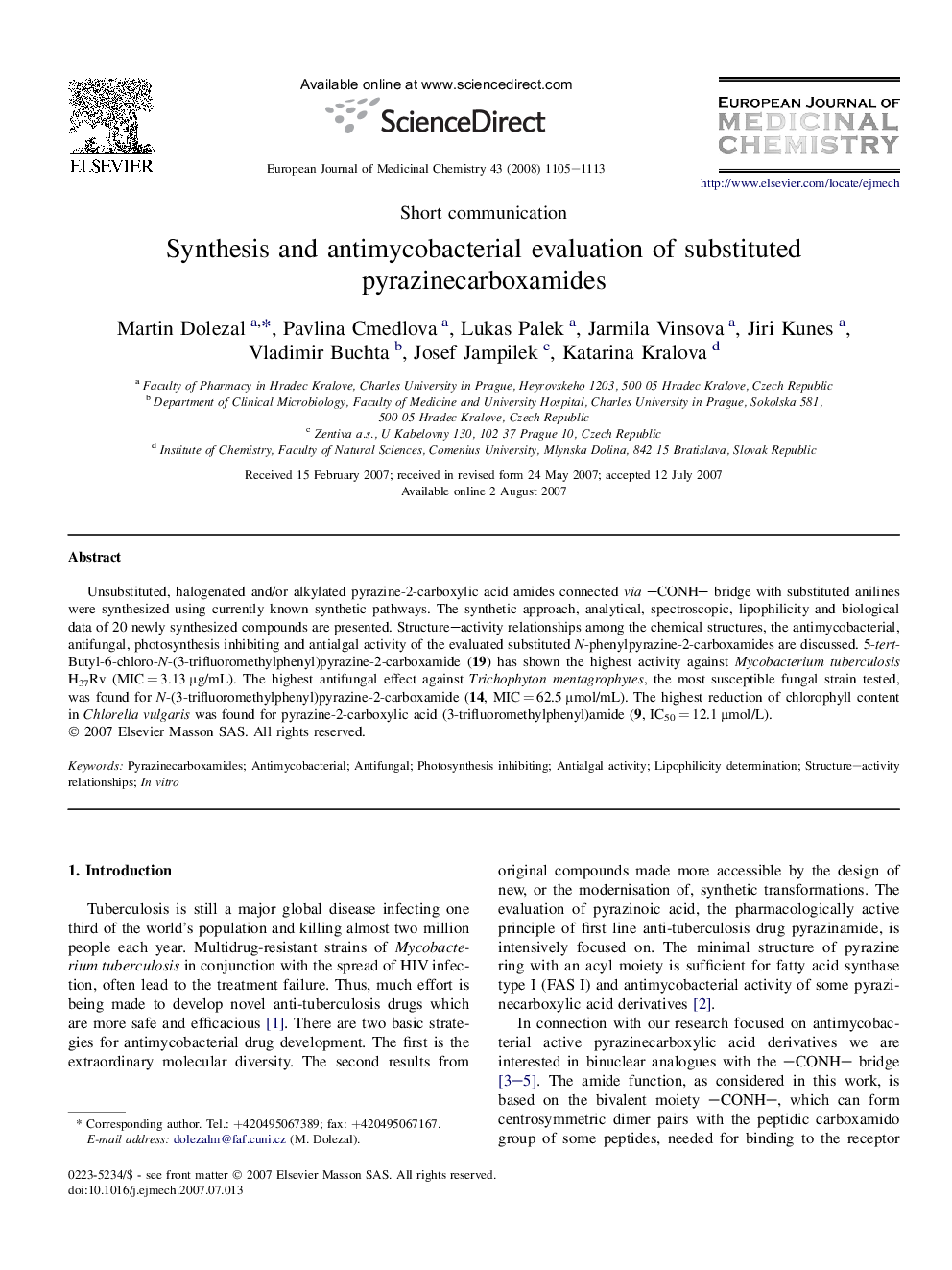| Article ID | Journal | Published Year | Pages | File Type |
|---|---|---|---|---|
| 1393477 | European Journal of Medicinal Chemistry | 2008 | 9 Pages |
Unsubstituted, halogenated and/or alkylated pyrazine-2-carboxylic acid amides connected via –CONH– bridge with substituted anilines were synthesized using currently known synthetic pathways. The synthetic approach, analytical, spectroscopic, lipophilicity and biological data of 20 newly synthesized compounds are presented. Structure–activity relationships among the chemical structures, the antimycobacterial, antifungal, photosynthesis inhibiting and antialgal activity of the evaluated substituted N-phenylpyrazine-2-carboxamides are discussed. 5-tert-Butyl-6-chloro-N-(3-trifluoromethylphenyl)pyrazine-2-carboxamide (19) has shown the highest activity against Mycobacterium tuberculosis H37Rv (MIC = 3.13 μg/mL). The highest antifungal effect against Trichophyton mentagrophytes, the most susceptible fungal strain tested, was found for N-(3-trifluoromethylphenyl)pyrazine-2-carboxamide (14, MIC = 62.5 μmol/mL). The highest reduction of chlorophyll content in Chlorella vulgaris was found for pyrazine-2-carboxylic acid (3-trifluoromethylphenyl)amide (9, IC50 = 12.1 μmol/L).
Graphical abstractTwenty potential pyrazinamide derivatives were synthesized using modification of currently known synthetic pathways. Substituted anilides of pyrazinecarboxylic acid were investigated for their antimycobacterial, antifungal, photosynthesis-inhibiting activities and their lipophilicity parameters.Figure optionsDownload full-size imageDownload as PowerPoint slide
